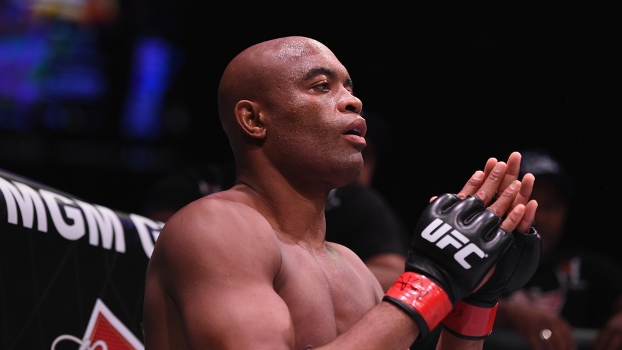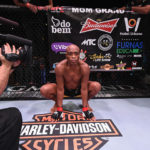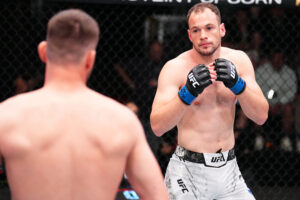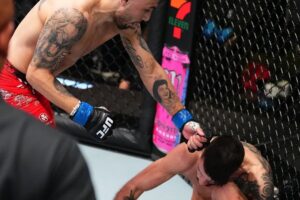By Bruno Ferreira and Lucas Carrano
The world of MMA has been in shock over the last week since it was announced that Anderson Silva had failed a surprise drug test carried out before his fight against Nick Diaz, at UFC 183. The Brazilian, former UFC middleweight champion and widely considered one of the greatest MMA fighters of all time, was caught using banned anabolic substances and is expected to be tried soon.
See too
The “Spider” case has not yet been judged, but since then, precisely because of the magnitude of the case, a lot of conflicting information has emerged, which has caused a series of doubts and misunderstandings on the part of the public. To clarify the case, the SUPER FIGHTS created the “FAQ SUPER FIGHTS” section, in which we will list the main aspects surrounding the controversial episode involving Anderson Silva and its explanations.
Explanations about Anderson Silva's doping:
What substances were found in the body of Anderson Silva and in what context did this happen?
Anderson Silva was caught using drostanolone and androsterone in esurprise anti-doping test carried out on January 9th, as preparation for his fight against Nick Diaz at UFC 183, which would be on the 31st of the same month.
What do these substances do?
Drostanolone is an anabolic steroid that acts on muscles, causing them to grow and become more rigid. In general, the substance is used by bodybuilders and presents better results when combined with other steroids. Androsterone is a derivative of testosterone, a natural male hormone, whose action is active in increasing vigor and artificially optimizing physical performance.
How do surprise tests work, like the one that caught Anderson?
In recent times, the method of surprise anti-doping tests has been intensified, especially by the Nevada Athletic Commission (the main regulatory body for MMA worldwide). Even outside the competition period, which comprises the last 12 hours until the fight takes place, athletes have been tested for prohibited substances, Performance Enhancing Drugs (“Performance enhancing drugs”, or PEDs). In general, tests take place during the fighters' training, at any time after the official announcement or signing of the contract for a fight.
If the exam was done on January 9th, that is, 22 days before UFC 183, why wasn't the fight against Diaz cancelled?
This was the great aspect that even angered the director of the Nevada Athletic Commission. However, the explanation is simple: according to the laboratory responsible for the tests, there was not enough time for the results to come out before the fight. According to the official explanation, the Sample analysis is slow and thorough, and in order to avoid errors, there is what is called a “confirmation process”. So, in this case, the results only came out on February 3rd, three days after Anderson's fight against Diaz.
But, given the importance of Anderson's fight, couldn't the laboratory have “accelerated” the process and released the results sooner?
No. The laboratory has no knowledge of the athletes' identities, as samples are only sent by mail with identification numbers. Therefore, it is not possible to prioritize a particular exam based on its importance.
[vox id=”29238″]
How is it possible for a fighter to test positive on a test and, 22 days later, be clean?
This actually depends on the period for which the substance remains in the body. In some competitions with anti-doping tests, it is common for athletes to try to cheat the system through “cycles”, that is, using prohibited substances in a calculated way so that, on the day of the competition, the body is already completely clean.
Why hasn't there been a definitive decision on the case yet?
Because Anderson Silva and the Nevada Athletic Commission are still awaiting the results of the retest. The fighter's trial will be held at a hearing on February 17th.
What is a retest and when will the results come out?
A countertest is a second exam, carried out with material collected on the same day as the original test. This procedure exists precisely to eliminate any doubts regarding the results of anti-doping tests and minimize the chances of error, for whatever reason. The counterproof of Anderson Silva It should be out soon, but the exact date depends on the progress of the analysis in the responsible laboratory.
Was this the only exam performed by Anderson?
In addition to the fateful test on 9/1, “Spider” also underwent two other tests: one on 19/1, blood, and another on the day of the fight, urine. Both came clean.
But if the January 19th exam came back clean, does that mean Anderson will be exonerated?
No, one thing has no relation to the other. Anderson will be acquitted if the retest for the January 9 exam comes back clean. The results haven't come out yet.
Which laboratory analyzes the fighter's test? How is he chosen?
the test of Anderson Silva was carried out by the Sports Medicine Research & Testing Laboratory (SMRTL), located in the city of Salt Lake City, in the state of Utah (USA). The laboratory linked to the University of Utah was chosen by the Nevada Athletic Commission to evaluate the samples because it is an independent body and has served sports entities for more than a decade. It is one of only 32 laboratories around the world that are accredited by WADA, the World Anti-Doping Agency.
Anderson requested that the countertest be carried out in another laboratory, but his request was denied. Why?
Because this situation would disobey WADA regulatory procedures. The exam must be repeated in the same place where the first sample was analyzed.
What are the chances that there was a mistake and Anderson is innocent?
This possibility is always considered – precisely for this reason it is necessary to register the retest. However, experts guarantee that, due to SMRTL's standard of excellence and the care in checking and confirming the results before any disclosure, the chance of an error being made is minimal.
But the UFC recently did not back down on a punishment for Cung le after an inconclusive drug test? Can't the same happen with Anderson?
These are different situations. Anderson was caught with a prohibited substance (drostanolone), which in itself constitutes an infraction. Le was already taking a natural substance, growth hormone (GH), but in unacceptable proportions. In the case of the Vietnamese man, it could not be proven that the GH disproportion was caused by a banned substance, and therefore the punishment was withdrawn. Furthermore, there is an important difference: the Brazilian's examination was carried out in a highly reliable laboratory, which follows WADA standards. Le had his samples analyzed by a laboratory chosen by the UFC in Hong Kong, as China, where the Vietnamese fought, does not have its own Athletic Commission. Thus, in the case of Anderson, it can be said that the rigor is greater.
What is the likely punishment for Anderson Silva?
In cases like Anderson's, in which the athlete has no history of doping, if he confesses to using the substances, the standard punishment is likely to be that he will receive a suspension of approximately nine months and a monetary fine, corresponding to part of the value of your fight bag. Furthermore, the victory against Nick Diaz should be transformed into no-contest, that is, a fight without result.
Why Jon Jones was not punished for cocaine use and Anderson is at risk of being suspended?
Jon Jones He was also caught in a surprise doping test, but for the use of cocaine – a recreational drug, whose potential to increase performance is not scientifically proven. Because he tested positive for a substance that is not considered illegal outside of the competition period, Jones did not receive any type of legal sanction from regulatory bodies. In fact, a test that denoted the use of this type of substance, in this case cocaine, should not have even been carried out on the athlete, as the person responsible for the Nevada Athletic Commission later admitted. Anderson's case is different, as the substances he was caught with are also prohibited outside the competition period.
Why isn't cocaine prohibited outside of the competition period and anabolic steroids are?
Because, according to several studies, the use of cocaine, marijuana or any recreational drug does not bring performance benefits to the athlete. In the case of anabolic steroids, it is different: the athlete can make gains from the illegal substance during the training period, becoming stronger, recovering more quickly from injuries or even being able to train more willingly. Precisely for this reason, the use of anabolic steroids is punishable even if the athlete is clean on the day of the fight.
But is Nick Diaz? He was also caught using a recreational drug (marijuana) and should also be punished.
The case of Nick Diaz is so different from Anderson Silva how much of Jon Jones. Nick Diaz was caught using marijuana during the competition period. Even though it is a recreational drug, whose benefits on athletic performance are not proven, the substance is prohibited under such conditions. As he is a repeat offender, this is the third time that Diaz has tested positive for marijuana in his career, the athlete must suffer a suspension longer than the traditional nine months.
With the controversy, will Anderson continue as coach of TUF Brasil 4?
The UFC even announced the permanence of Anderson Silva before the program, but was forced to change plans at the request of the Nevada Commission. Like this, “Spider” left the attraction and was replaced by Rodrigo Minotauro.







Comments